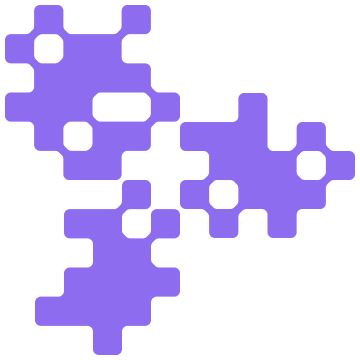
Transformer Architecture Explained: The Technology Behind ChatGPT, BERT & Co.
Benedict Breitenbach
Thu Jul 03 2025

Table of Contents
In recent years, Artificial Intelligence (AI) has made tremendous strides – especially in the field of natural language processing. Whether in chatbots, automatic translation, or text generation: the term “Transformer architecture” is appearing more and more frequently. But what exactly is behind it?
The Transformer architecture forms the foundation of many modern AI models, including well-known systems like GPT, BERT, or T5. Since its introduction in 2017, it has established itself as a groundbreaking development in AI research – and for good reason.
In this blog post, you’ll learn how the Transformer architecture originated, how it works, and why it is considered one of the most important milestones in machine learning.
The Origin of the Transformer Architecture
Until 2017, recurrent neural networks (RNNs) and their extensions like LSTMs (Long Short-Term Memory) were the standard for natural language processing. These models analyzed text step by step – word by word. Although this worked for many tasks, such models were often slow and inefficient, especially with long texts. Moreover, there was a risk that important information could be lost over long sequences.
A real turning point came with the publication of the research paper "Attention is All You Need" by a Google team led by Ashish Vaswani. It introduced the Transformer architecture – a new model that completely abandoned recurrent structures. Instead, it focused on an innovative mechanism: Self-Attention. This allows the model to identify which words are particularly important for understanding a text – regardless of their position – and to weight them accordingly.
This was a small revolution, because thanks to this architecture, texts could now be processed in parallel – in contrast to the sequential processing of earlier models. This led to significantly shorter training times and much better performance in many language processing tasks.
In the following years, researchers around the world adopted and further developed the Transformer architecture, applying it in numerous fields. Today, it forms the basis of many of the most powerful AI models – including systems for translation, summarization, and conversational AI like ChatGPT.
Core Principles of the Transformer Architecture
The Transformer architecture consists of two main components: an encoder and a decoder. These two modules work closely together, especially for tasks like machine translation. In many modern models – such as BERT or GPT – only one of the two parts is used, depending on the application.
Encoder and Decoder
The encoder processes the input data (e.g., a sentence) and creates an internal representation that captures the essential information.
The decoder uses this representation to generate output, such as a translation or a response.
Unlike earlier models, processing is not sequential but largely parallel – making Transformers especially efficient.
Self-Attention: The Core Mechanism
The most important component of the architecture is the so-called self-attention mechanism. It enables the model to consider the entire context when processing a word – no matter how far other relevant words are apart.
Example: In the sentence “She saw the bat in the corner,” the context determines whether “bat” refers to an animal or a piece of sports equipment. The self-attention mechanism helps the model correctly interpret such relationships by checking which other words in the sentence are important.
Positional Encoding
Since Transformer models – unlike RNNs – do not inherently recognize word order, they need additional information: positional encoding. This encodes the position of each word in a sentence, allowing the model to understand word order.
Additional Components: Feedforward Layers and Residual Connections
Each layer within the encoder and decoder also contains:
- Feedforward layers that perform additional transformations independent of context,
- Residual connections and layer normalization for more stable training processes and overall better model performance.
This combination of modular structure, efficient context processing, and flexible scalability makes the Transformer architecture a milestone of modern AI research.
Applications and Transformer-Based Models
Since the introduction of the Transformer architecture, numerous powerful models have been developed based on it. Today, they are used in a wide range of applications – from text analysis to image processing.
Language Models and Text Processing
Transformers have achieved great success particularly in the field of natural language processing (NLP). Among the most well-known models are:
BERT (Bidirectional Encoder Representations from Transformers): Developed by Google, specializes in tasks like text classification, named entity recognition, or question answering. BERT reads texts bidirectionally – from both directions – allowing it to capture subtle nuances.
GPT (Generative Pre-trained Transformer): A family of autoregressive models developed by OpenAI. They can generate, complete, or even translate texts – with a strong focus on fluent, context-sensitive language.
T5 (Text-to-Text Transfer Transformer): A flexible model from Google that formulates every NLP task as a text-to-text problem – whether translation, summarization, or question answering.
These models impressively demonstrate how widely applicable Transformer-based approaches are – both in specialized and generative use cases.
Application Areas
Transformers are used in many practical applications today, including:
Beyond text, Transformers have also entered other domains – such as genomics, robotics, and audio processing. Their ability to recognize complex patterns in large data sets makes them a universally applicable tool.
Challenges of the Transformer Architecture
As powerful as the Transformer architecture is, it brings specific technical and practical challenges that play a central role in many areas of application.
1. Complexity of Self-Attention
The self-attention mechanism is the core of the architecture – but also one of its most computationally intensive components. Calculating attention scores between all word pairs in a sequence has quadratic complexity with respect to input length. This means: the longer the text, the faster computation and memory requirements grow – which can lead to efficiency issues, especially with very long documents.
2. Memory-Intensive Architecture
Compared to other neural networks, Transformer models require high memory capacity, especially during training. The number of parameters can quickly reach into the billions, requiring not only powerful hardware but also causing high demands during inference (i.e., applying a trained model).
3. Difficulty with Long Sequences
While Transformers can theoretically model long-range dependencies, they reach limits in practice. The reason lies in the fixed input length, which is often restricted by technical or resource constraints. Models therefore often have to work with “chunked” texts – which can lead to a loss of global context.
4. Limited Interpretability at the Architecture Level
Despite extensive research, it remains difficult to understand how Transformer models internally represent and process information. While attention weight visualizations can reveal part of the decision logic, many internal processes remain non-transparent, making it hard to explain model behavior.
5. Structural Inertia
The Transformer architecture is optimized for standardization and reusability of layers. This makes its structure very robust but also relatively inflexible when it comes to structural innovations or domain-specific adaptations. Any deviation from the standard architecture requires extensive redevelopment and testing.
FAQ: Further Questions About Transformer Architecture
What is the difference between a Transformer and an RNN?
While RNNs process input data sequentially and pass information from one step to the next, Transformers analyze the entire input sequence simultaneously. This makes them much faster and better at capturing long-range dependencies in text.
Why is the self-attention mechanism so important?
Self-attention allows the model to determine which other words in a sequence are particularly relevant for each word – regardless of position. This significantly improves context understanding and is a major reason for the architecture’s success.
Are Transformers only used for text?
No. Although the architecture was originally developed for language processing, it is now used in other fields – such as image processing (Vision Transformers), audio data, or even bioinformatics.
How large is a typical Transformer?
That depends on the use case. Small models may have a few million parameters. Modern language models like GPT-3 or GPT-4, however, contain several billion to over a hundred billion parameters.
What are the biggest challenges in using Transformers?
The main challenges are high computational and memory requirements, difficult interpretability, and limited efficiency with very long sequences.
The Transformer architecture has become the foundation of modern AI applications. It combines efficiency, contextual understanding, and scalability in a flexible structure – fundamentally changing language processing. Despite technical challenges like computational demand and interpretability, it remains the central model design behind the most advanced AI systems of our time.

